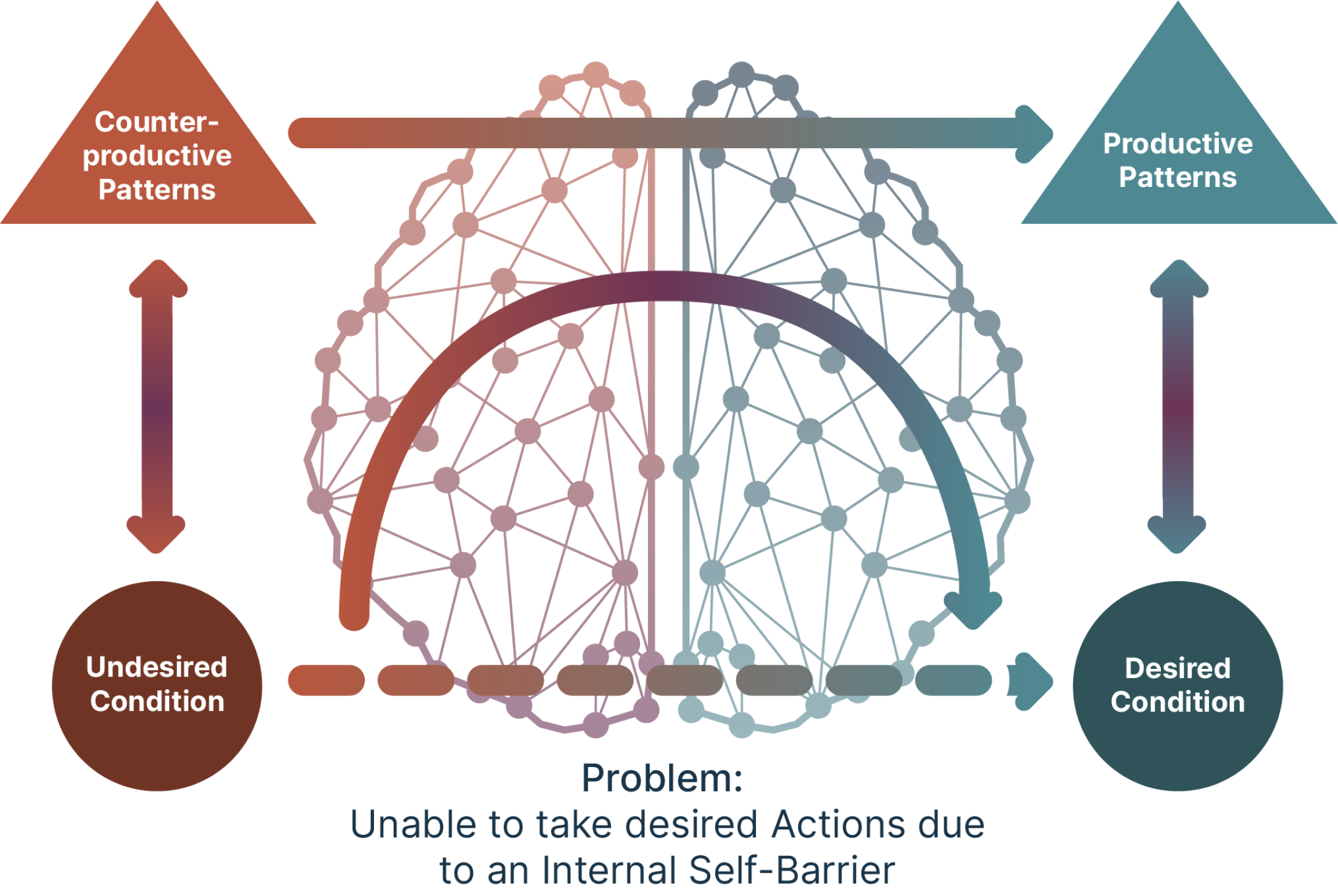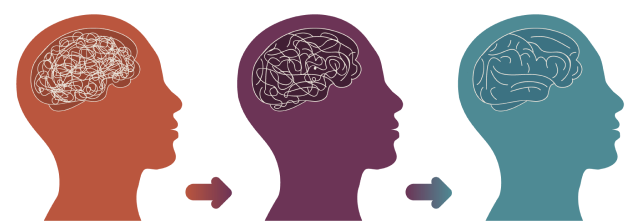Applying the Universal Method
To apply the Universal Method, a person distinguishes a problem as the difference between their current circumstances in a given area of life and their desired circumstances or objective. They then reduce the problem into a series of sub-problems and identify a series of actions for each sub-problem to achieve their objective. To make their action plans actionable, they distinguish the internal self-barriers that impede them from taking any of the actions and apply neurophysiologically-informed levers to overcome the internal self-barriers, take the actions, and move toward their objective.

In the NEXT System, a lever is a set of mental or physical actions that are known to enable, or that may enable, a person to transition from the counterproductive brain patterns associated with an internal self-barrier that is preventing them from taking an action to productive brain patterns that enable them to take the action.
The NEXT System offers numerous evidence-base levers and software tools that make the levers easy and enjoyable to use.
The process of distinguishing and solving a problem is designed to be iterative and dynamic. As a person progresses through their action plan, the results of their actions either move them toward their objective or necessitate a change in their action plan as they encounter new barriers and experience levers as effective or ineffective. This enables the user to optimize their performance (i.e., the effectiveness and efficiency with which they take the actions) and maximize their likelihood of achieving their objective (i.e., the probability of bringing about their desired change in their circumstances).
